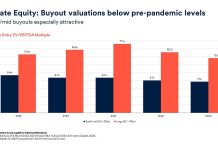Piers Leigh, Principal, Office Agency, Avison Young, writes: The South East occupational market has struggled bravely towards the finish line in 2016. Despite the strong head winds of Brexit and an ever changing geopolitical landscape, it appears to be in good shape if a little down on pace as the end of the year approaches.
On the face of it, with transactions volumes looking likely to be up year-on-year once all the stats have been finalised and with record or cycle-high rents being seen in almost all the main commercial hubs in the South East, you could be forgiven for thinking that we enter 2017 in good shape. However, peeling away the well-spun headlines and looking a little more closely, the larger deals of 40,000 sq ft to 80,000 sq ft that drive the take up figures and the mega deals of 80,000 sq ft plus have been noticeable by their absence. In Q4 this became particularly acute with the ASOS deal in Watford being the only deal above 50,000 sq ft likely to happen before the end of the year. Coupled with the below par Q3 figures, overall take up for H2 will be notably below the 5-year average and with H1 only being saved by some larger transactions spilling over from 2015 – such as Thales and Bayer in Reading – you could argue that, based solely on take up, that 2016 has been something of a disappointment.
So where does that leave the occupational market going into 2017? The general sentiment is that 2017 could be a challenging year, but certainly not a disaster. We have gone through the lease expiries and breaks peak of 2015, 2016 and 2017 (with companies on average moving 6 to 18 months ahead of their lease event) when 5, 10, 15 and some 25-year lease events all collided to give occupiers the chance to review their office requirements. We are now coming into a leaner time in terms of lease events as the low take-up years of 2008/9 and 2012/13 are beginning to feed through the system. 2003/4 was also a testing time for the South East market delivering very few 15-year lease events, so we will be thin in terms of structural demand and subsequent churn. Larger requirements will likely lead to a delay in decisions, especially where companies have scope to redeploy staff between different offices. And with US businesses – which account for a number of occupiers in the South East – waiting to see what a Trump presidency has install for them, along with the closely guarded secrets of the Brexit negotiations which affect us all in the UK, we see no immediate upturn in take up – certainly not for the first 2 or 3 quarters of 2017.
That said, with a number of occupiers only able to delay their requirements for a short time and with the economy broadly set to remain stable – barring any significant financial shocks being generated out of the upcoming elections in the core European Union countries – we expect 2017 to end strongly as occupiers run out of time and are forced to make a decision on their occupational strategy. But a strong Q4, as welcome as it will be, is unlikely to save what looks set to be a second year of reduced take up across the board.
Conversely, this does not mean rents are going to be slashed and bargains will be plentiful for the occupier. Historically low interest rates and a stable economic conditions will allow landlords to keep their nerve and maintain rents. When transactions are taking place in markets where several buildings can credibly be called competition (and for larger requirements the sluggish development pipeline has made these locations rare) you will see a softening of rent-free periods. For longer term commitments some very generous incentives – compared to the beginning of 2016 – can be found with the right advice.
Occupiers will need to grab the opportunity when it presents itself. With sentiment on the wane, the limited flow from the development pipeline is likely to reduce further. Already a number of high-profile, planned schemes have paused while investors and developers assess the markets’ next twists and turns. But a missed opportunity for a tenant could take a long time to be replaced. New developments that get off the ground will rightly shift rents forward and can expect to command a premium if they are “one offs” for the market. We can therefore expect to see the rental growth story of 2016 continuing in some locations with new product coming online despite the low levels of take up predicted.
In summary, 2017 looks to be an opportunity for the occupier, but they will have to battle for any concessions they can negotiate. For landlords it will be a time when they can ill afford to lose out to the competition as they cannot be guaranteed a “second bite” at the cherry anytime soon. They will need to make sure their agency teams start the year with a hunger in their bellies and a desire to battle hard for the deals that are out there. Starting January with a quiet month of detox and pausing for reflection could lead to some very hungry people come the midpoint of the year as everyone fights for the limited scraps that are out there. Our message is to hit the ground running when term starts again on the 3rd January and make sure your team is motivated and ready to chase down all opportunities as you never know how long it will be for the next one to come along.
Tom Bridgman, Principal, Investment, Avison Young, adds: The second half of 2016 has seen a flurry of investment transactions, this is a welcome change from the first half of the year where there was a notable slowdown, in anticipation of the European referendum. Many investors were taking a cautious approach, trying to build a warship of cash ahead of the result of the vote. Post BREXIT, a number of the retail funds closed and sold assets to increase their cash position further. During this period there remained a depth of investors which meant the funds were able to exit from a number of assets close to valuation levels, and in turn they were able to re-open going into Q4. The majority of transactions were made by either overseas investors, due to the positive exchange rate, or local authorises as they looked to capitalise on the low cost of capital. Spelthorne council’s purchase of the BP headquarters in Sunbury for £340m being the notable transaction.
The focus for investors in the main has been long dated, secure, low risk assets. We have seen inward yield shift for this stock, due to the high level of demand and shortage of this type of product. Prime 10 year income is currently trading between 5.00% and 5.25%. The most notable transactions being Wey House in Guildford purchased by Guildford Borough Council for 5.10% and Hitachi House in Staines currently under offer at circa 5.07%. At the other end of the scale, shorter income / vacant offices have also seen high levels of demand, as the number of permitted development buyers continues to increase due to the lack of housing. This is having a positive effect on the occupational market as it is decreasing the level of secondary supply of space.
So what will 2017 bring? We believe more of the same. The funds are likely to take a similar view on life until the UK’s position within Europe becomes clearer. We do not believe there will be a let up of spending from overseas investors or local authorities. Significant investment deals such as the Arlington Portfolio will likely go through in Q1 of 2017 which will kick start the year. The investment market does however need to see an increase in 20,000 sq ft plus occupational deals in order to drive transaction volumes.





















